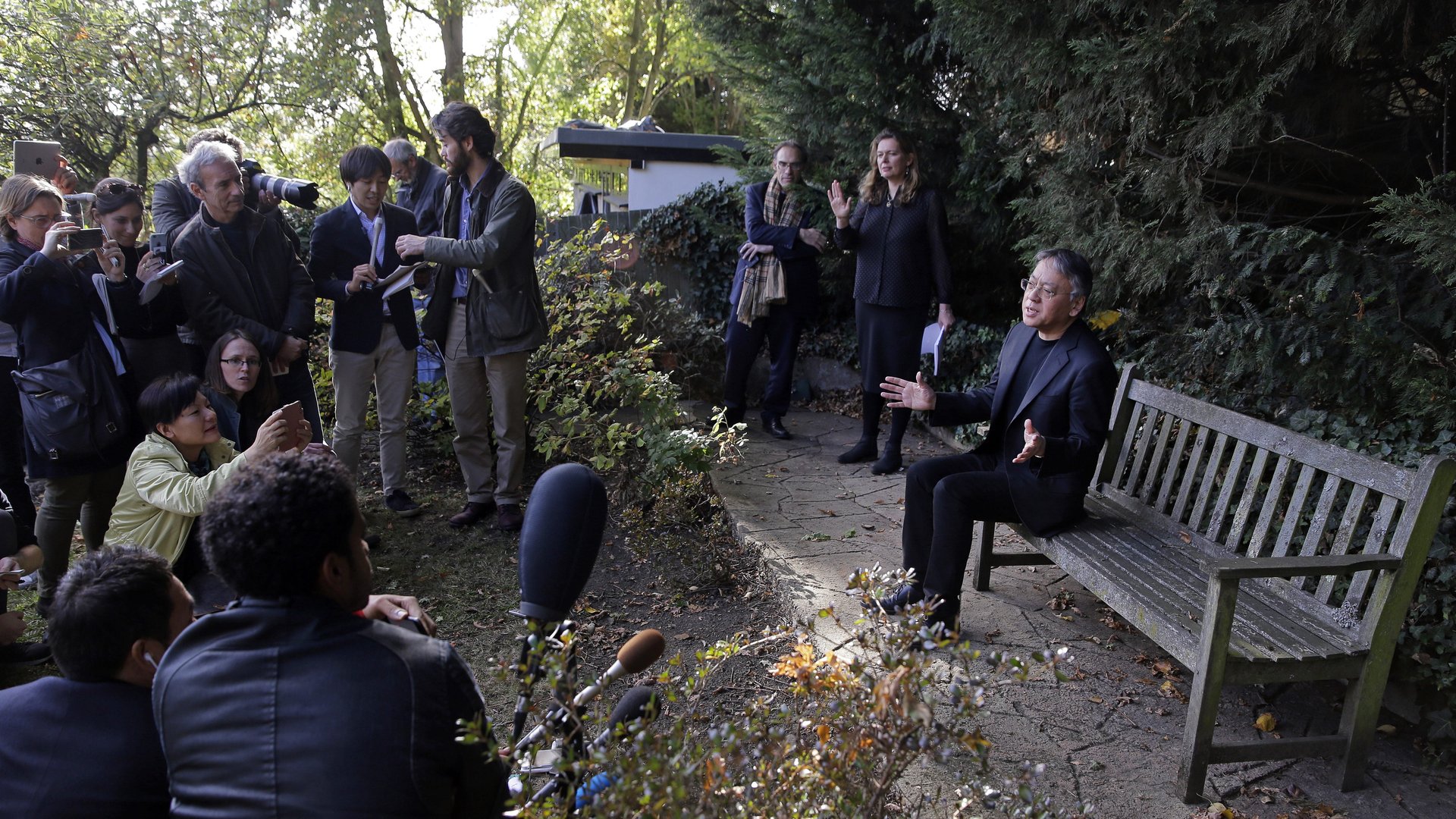Kazuo Ishiguro’s Nobel speech exquisitely describes the immigrant longing for an imagined home
The British author Kazuo Ishiguro is a subtle creator. He won the Nobel prize in literature this year for the quiet, unknowable dread he imbues in his characters, whose emotions and ideas are often brimming just below consciousness, and barely acknowledged.


The British author Kazuo Ishiguro is a subtle creator. He won the Nobel prize in literature this year for the quiet, unknowable dread he imbues in his characters, whose emotions and ideas are often brimming just below consciousness, and barely acknowledged.
But in the Nobel acceptance speech Ishiguro delivered yesterday (Dec. 7) at the Swedish Academy, he offered an unusual experience for fans of his fiction: A lecture in which he spoke plainly about his creative process, and his hopes for his works. (The text will be published by Knopf, as a book called My Twentieth Century Evening and Other Small Breakthroughs, on Dec. 12.)
Ishiguro described important inflection points that informed his creative journey, the first of which happened in 1979, when he was in his twenties. Ishiguro realized he wanted to write about Japan, the country he’d moved from to England with his family at age five, despite the fact that he hadn’t been back since. He said:
Today, the prevailing atmosphere is such that it’s virtually an instinct for an aspiring young writer with a mixed cultural heritage to explore his “roots” in his work. But that was far from the case then. We were still a few years away from the explosion of “multicultural” literature in Britain.
What eventually became his first novel, A Pale View of Hills, was an image of Japan he had cobbled together from his memories and the culture his parents upheld in their Surrey house. The writer realized that what he imagined was probably unrecognizable to people living in contemporary Japan.
Said Ishiguro:
Hence the need for preservation. For by the time I reached my mid-twenties–though I never clearly articulated this at the time–I was coming to realise certain key things. I was starting to accept that “my” Japan perhaps didn’t much correspond to any place I could go to on a plane; that the way of life of which my parents talked, that I remembered from my early childhood, had largely vanished during the 1960s and 1970s; that in any case, the Japan that existed in my head might always have been an emotional construct put together by a child out of memory, imagination and speculation. And perhaps most significantly, I’d come to realise that with each year I grew older, this Japan of mine–this precious place I’d grown up with–was getting fainter and fainter.
I’m now sure that it was this feeling, that “my” Japan was unique and at the same time terribly fragile–something not open to verification from outside–that drove me on to work in that small room in Norfolk. What I was doing was getting down on paper that world’s special colours, mores, etiquettes, its dignity, its shortcomings, everything I’d ever thought about the place, before they faded forever from my mind. It was my wish to re-build my Japan in fiction, to make it safe, so that I could thereafter point to a book and say: “Yes, there’s my Japan, inside there.”
Ishiguro, it seems, was guided by the same impulse ordinary non-Nobel-winning immigrants and displaced people have: to document the past, interview older family members, look at old photos, and write down their memories.
But even people whose families have stayed in the same country for generations can find resonance in the idea of an imagined home, the seemingly futile attempt to reconstruct lost childhood, that can sometimes result in deeply ingrained memories that are as vivid as reality—despite their fictions.